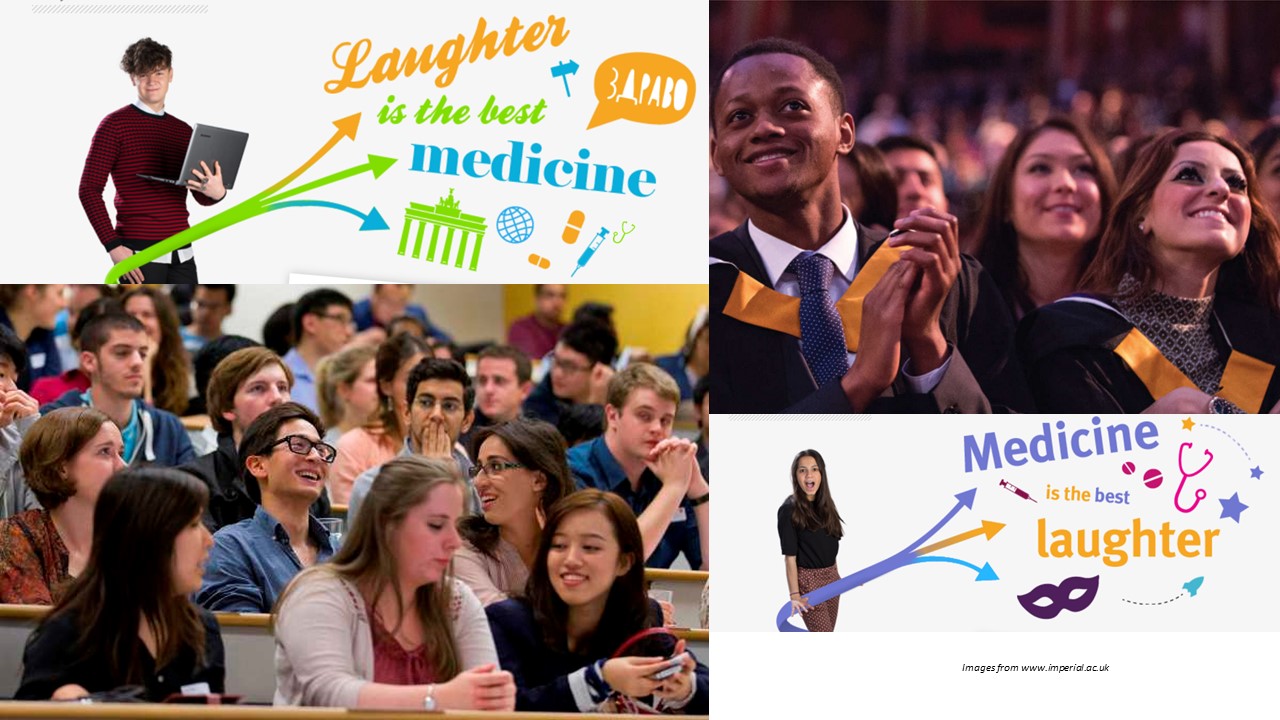


Theme
3BB The lecture and the flipped classroom
INSTITUTION
Imperial College London - United Kingdom
(Medical Education Research Unit)

Humour is a social construct whose impact on learning is presumed to be positive. The empirical evidence for this in the medical education literature, however, is limited.
This project looks at the experiences, perceptions and attitudes of medical students to the use of humour in their undergraduate lectures.
This was a qualitative study, conducted in the spirit of interpretivism: an approach that acknowledges subjectivity and the role of perspective and context.3
Focus groups were used as the method of data collection and an interview guide was designed using an iterative approach.
Medical students were recruited from one medical school using a combination of poster, email and snowball methods of recruitment. The focus groups were conducted by a facilitator using audio-recording and an interview guide.
The audio-recordings were transcribed and the data analysed using the principles of thematic analysis by two researchers, with discussion of themes to consensus.
Students appreciated lecturers who were able to use humour to assist learning and were able to establish a safe learning environment.
Although humour had the potential to have positive impacts on learning, students also recognised the potential challenges and were sensitive to negative perceptions. This became less significant when they had a longitudinal relationship with the lecturer.
Humour may promote successful learning relationships, especially in a traditionally hierarchical profession.
However, medical educators also have a unique impact on role modelling and may wish to use humour judiciously.
- Twenge JM. Generational changes and their impact in the classroom: teaching Generation Me. Medical Education (2009) 43:398-405
- Wear D et al. Making fun of patients: Medical students' perceptions and use of derogatory and cynical humor in clinical settings. Academic Medicine (2006) 81:454-462
- Bunniss S & Kelly DR. Research paradigms in medical education research. Medical Education (2010) 44:358-366

Humour & how it is perceived in the lecture setting
“It’s kind of like using salt in your food. Use it too much and you spoil the entire thing, use it just right you’ll make everything better”
Students recalled a range of humour tools used by a small number of lecturers.
Content-related humour included: mnemonics & word associations, story-telling and funny pictures or videos. There were also examples of black humour & cynicism, stereotypes and sexual humour.
Students generally enjoyed light banter targeting audience-related factors: student behaviour, rivalry between medical schools and rivalry between specialties.
They also appreciated the difference between deliberate humour and lecturers who created a light-hearted mood or were charismatic.
Humour and relationship to learning
“You get inside information into their ways of thinking, their hopes and dreams, their kids, their family… they become more approachable, and then by proxy the lecture itself becomes more approachable as well”
Students felt that humour could contribute to a safe learning environment by increasing attention, reducing intimidation, building rapport and as a method of interaction.
They especially appreciated humour that was relevant to learning the lecture content but also found it useful to increase the appeal of a subject.
There was some evidence of inappropriate or irrelevant humour that did not assist learning and students questioned the need for this.
Although there were few specific examples of humour being used deliberately to assist learning, students remembered humourous moments as a signpost for lecture material afterward due to uncommon occurrence.
Humour and relationship to lecturer
“…We should perhaps be careful about joking in front of patients, but doctors appreciate that the joke doesn’t have any deep rooted disrespect…”
Some students were cautious about perceived negative or unnecessary humour, especially if it involved stereotyping patients.
This led to conflicts between the ideals of role modelling professionalism with the relief of insight into ‘human’ characteristics. This conflict was often attenuated by familiarity with, and perceived credibility of the lecturer.
Although some students were concerned about blurring the boundaries, others felt that a lecturer’s use of humour did not impact on their perception of them as a doctor.
Images from www.imperial.ac.uk. Students featured in College photography were not study participants or related to the research project
 Send Email
Send Email